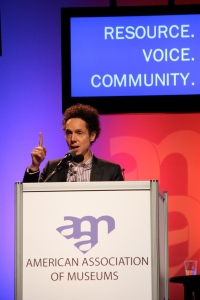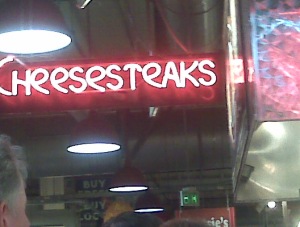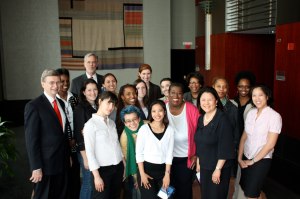Starting with the comment at the general session on Friday that the “Spark” video should have been closed captioning, access to museums, both for visitors and staff, has been a major issue at this year’s conference.
This is an impassioned topic: All of us know someone who has special access needs or have special needs ourselves. At the Q&A for a session on Friday afternoon, “Autism and Access: Connecting with Museums,” museum professionals who have children with autism and those who have high-functioning autism themselves, told personal stories of how museums they have visited deal with autism. The session not only dealt with autistic people as visitors to museums but autistic volunteers as well. I know that it is often hard for autistic individuals to hold a job, and museums can help them with life-skills by welcoming them as volunteers.
“Universal Design,” one of the buzzwords at the sessions dealing with disability, involves adapting programs and exhibits for the disabled, museums instead create exhibits and programs that are designed with both the disabled and nondisabled in mind. At a session on Friday morning entitled “Hear Art, See Music: Nurturing Aesthetic Development in All Children” the speakers on the panel explained how the Hear Art, See Music (HASM) program, which makes connections between art and music in a museum setting, is so valuable because it addresses so many learning styles. This can help students with learning disabilities but it also is a great way for anyone to learn.
Many of the technologies on display at the MuseumExpo are also geared for people with disabilities. One of these technologies is a computer that can be moved with your eyes, partially created for paralyzed individuals. As a wheelchair user, I was also asked for advice about the accessibility of many of the products on display.
It is obvious from the comment that the deaf woman made at the general session, that we still have a ways to go to be more inclusive of people with disabilites, but from what I have seen at this year’s conference, these pleas for inclusion are not being ignored.—Ansel Lurio, M.A. candidate, Cooperstown Graduate Program, SUNY Oneonta


 If you’ve still got some time, pop next door to the convention center and sample the fares at the
If you’ve still got some time, pop next door to the convention center and sample the fares at the 